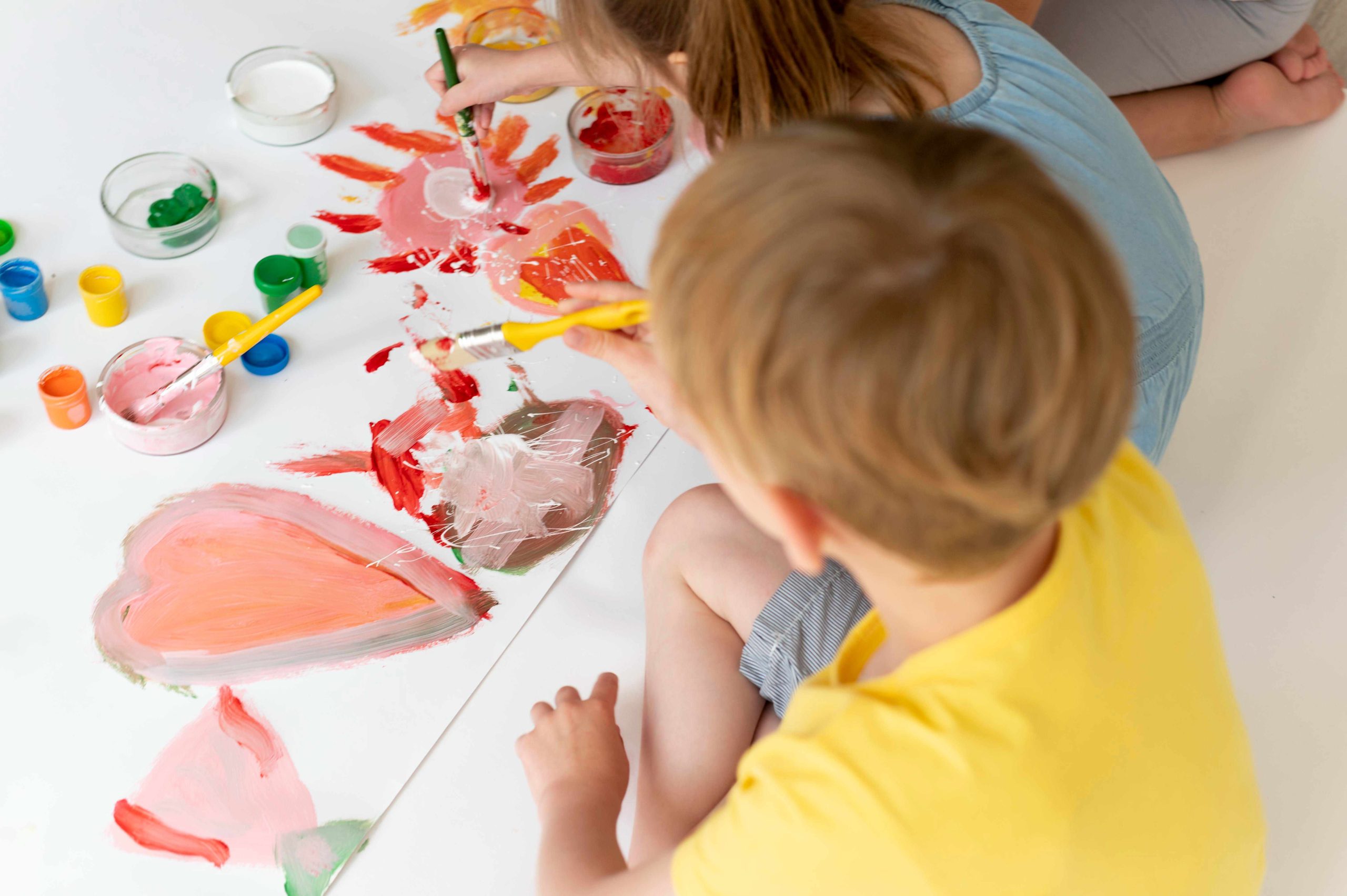
20 Creative Art Activities for Preschoolers to Boost Attention Span
Preschoolers undergo rapid growth and development, but they often struggle with a limited attention span, posing a challenge for both them and their teachers.
Art activities offer an effective solution to this challenge, fostering creativity and imagination while enhancing attention span. Beyond attention span, these activities promote hand-eye coordination, fine motor skills, and problem-solving abilities, boosting self-esteem and confidence as children create unique artworks.
Teachers can encourage preschoolers to explore various art forms, including painting, sketching, sculpting, and printing, tailoring activities to individual interests and attention levels.
In addition to cognitive benefits, art activities provide a means for emotional expression, cultural exploration, and reinforcement of educational concepts like counting and color recognition. They also facilitate family and community connections through artwork that reflects personal or cultural history.
1. Finger Painting:
Engage preschoolers with tactile exploration and vibrant colors, enhancing focus through sensory experiences.
2. Collage Making:
Encourage creativity and focus through mixed-media artwork, allowing children to experiment with textures and forms.
3. Playdough Sculpting:
Provide playdough and tools to create sculptures, fostering attention to detail and fine motor skills.
4. Drawing and Coloring:
Offer various drawing materials to encourage creativity and focus on artistic expression.
5. Paper Mache:
Engage children in crafting with paper strips and glue, promoting patience and attention to detail.
6. Salt Painting:
Explore unique textures and designs with salt and watercolor paint, encouraging focus on artistic creation.
7. Paper Cutting:
Provide safety scissors and paper for children to practice cutting shapes, enhancing hand-eye coordination.
8. Clay Modelling:
Offer clay and sculpting tools for creating three-dimensional art, promoting creativity and focus.
9. Stamping:
Introduce stamps and ink pads for creating patterns and designs, stimulating concentration and creativity.
10. Weaving:
Provide yarn and weaving materials for creating unique patterns, fostering attention to detail and problem-solving skills.
11. String Art:
Explore geometric designs with nails and string, encouraging focus and precision.
12. Bubble Painting:
Experiment with bubbles and paint to create colorful and unique artwork, promoting creativity and focus.
13. Chalk Drawing:
Take art outdoors with chalk and pavement, encouraging large-scale creativity and focus.
14. Beading:
String beads to create jewelry or artwork, promoting fine motor skills and attention to detail.
15. Mask Making:
Create masks using various materials, encouraging creativity and attention to detail.
16. Sand Art:
Fill bottles with colored sand to create unique designs, fostering focus and creativity.
17. Tissue Paper Art:
Use tissue paper and glue to create colorful collages, encouraging attention to detail and artistic expression.
18. Printmaking:
Experiment with foam sheets and paint to create prints, promoting creativity and focus.
19. Nature Collage:
Collect natural materials like leaves and sticks to create collages, fostering creativity and appreciation for nature.
20. Rock Painting:
Decorate rocks with paint and designs, promoting focus and creativity while connecting with nature.
Incorporating art activities into the curriculum not only enhances attention span and creativity but also cultivates a lifelong love for learning and self-expression. By adapting activities to suit individual needs and fostering connections with families and communities, educators can create enriching experiences that support preschoolers’ holistic development.


